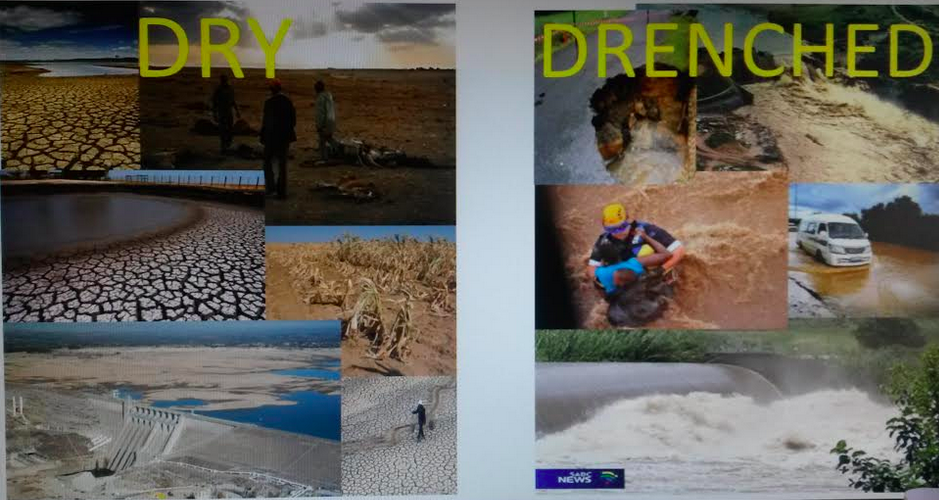Too little rain or too much rain
Or both, at the same time
Over the past several decades we have become accustomed to extreme weather events that are often, if not almost always, intensified by climate breakdown. Most common are flooding events, with too much rain, or drought, with too little rain. With hotter temperatures, the atmosphere holds more moisture, leading to storms and heavy rains, and water evaporates from the land, leading to intense dry spells. The rainfall saturates soils and overloads streams, limiting their ability to hold more water in the next rain event. Dry conditions stress vegetation and supplemental water reserves so those resources do not have a chance to recover before the next dry spell.
Studies from the US reflect the increases in extreme weather events. From 1958 to 2016 NASA reports that they have increased by 55% in the northeastern states, 42% in the midwestern states, and 27% in the southeastern states. Interestingly the western states, collectively considered, have shown modest increases, yet they have overwhelmed local watersheds.
What’s new is that we are increasingly seeing events with both flooding and drought, sometimes around the same time. Rather than treating such events as independent, they are being seen as “inextricably linked.” The efforts to manage such “hyro-climatic risks” are getting more complicated.

California reflects some of these complications. Recent “atmospheric rivers” (See iePEDIA in current issue of www.irishenvironment.com) have caused over $1 billion in property damage and at least 17 deaths. Despite this rainfall, 46% of the state is still experiencing “extreme drought” and 49% is in “moderate drought.”
Managing water resources in California has gotten more challenging. In the past droughts have been managed by using snowpack in the winter as frozen reservoirs that store water as snow. The snowpack melts gradually in the spring and summer and feeds streams and rivers and other parts of the state’s water supply infrastructure. But when the precipitation in the winter is heavy rain, especially in the mountains, and the storms come quickly, the water flows directly to streams and rivers and directly into the sea, and creates havoc on the way.
At the same time, land is so saturated that heavy rain flows overland and does not infiltrate the groundwater acquifers, which also serve as storage for water. Rain that falls on concertized urban areas is also lost to storage and much of it runs off to seas.
During floods it is hard to encourage people to conserve water since the immediate problem is to get rid of the floodwaters as soon and as directly as possible. And it is hard to be concerned about flooding in the midst of a drought.
Policy and practices in distributing water will need to account for the complex set of conditions caused by too much and too little rain at the same time or place.


No comments yet, add your own below